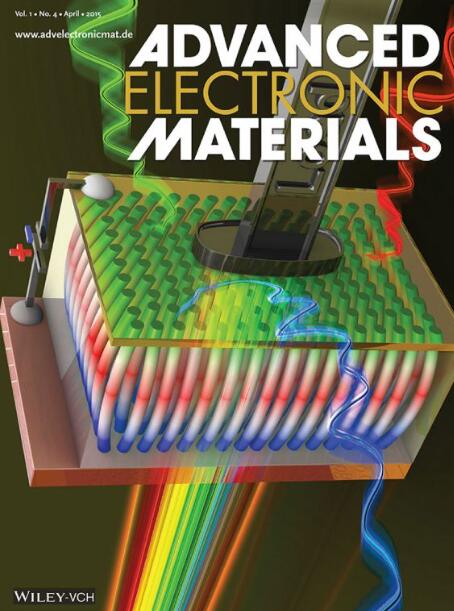On the Enhanced p-Type Performance of Back-Gated WS2 Devices
IF 5.3
2区 材料科学
Q2 MATERIALS SCIENCE, MULTIDISCIPLINARY
引用次数: 0
Abstract
In this work, a scalable technique is presented for the direct growth of tungsten disulfide (WS2) utilized in back-gated field-effect transistors (FETs), demonstrating robust and persistent p-type behavior across diverse conditions. Notably, this p-type behavior is consistently observed regardless of the metal contacts, semiconductor thickness, or ambient conditions, and remains stable even after high-vacuum and high-temperature annealing. Electrical characterization reveals negligible Fermi-level pinning at the conduction band edge, with minimal Schottky barrier heights for hole carriers below 180 mV and a well-defined thermionic transport regime. The devices exhibit field-effect mobilities with a clear back-gate dependence, reaching values up to 0.1 cm2V−1s−1. Temperature-dependent transport analysis indicates that charge carrier mobility is predominantly limited by impurity scattering and Coulomb interactions. First-principles simulations corroborate that the persistent p-type behavior could be driven by the presence of tungsten vacancies or WO3 oxide species. This study highlights the potential of WS2 for scalable integration into advanced p-type electronic devices and provides critical insights into the intrinsic mechanisms governing its charge transport properties.

后门控WS2器件p型性能增强研究
在这项工作中,提出了一种可扩展的技术,用于二硫化钨(WS2)的直接生长,用于背控场效应晶体管(fet),在不同条件下表现出稳健和持久的p型行为。值得注意的是,无论金属接触、半导体厚度或环境条件如何,这种p型行为都是一致的,即使在高真空和高温退火后也保持稳定。电学表征表明,在导带边缘的费米能级钉钉可以忽略不计,在180 mV以下的空穴载流子具有最小的肖特基势垒高度,并且具有明确的热离子输运机制。器件表现出场效应迁移率,具有明显的后门依赖性,达到0.1 cm2V−1s−1。温度相关输运分析表明,载流子迁移率主要受杂质散射和库仑相互作用的限制。第一性原理模拟证实了持续的p型行为可能是由钨空位或WO3氧化物的存在驱动的。这项研究强调了WS2可扩展集成到先进p型电子器件中的潜力,并为控制其电荷传输特性的内在机制提供了重要见解。
本文章由计算机程序翻译,如有差异,请以英文原文为准。
求助全文
约1分钟内获得全文
求助全文
来源期刊

Advanced Electronic Materials
NANOSCIENCE & NANOTECHNOLOGYMATERIALS SCIE-MATERIALS SCIENCE, MULTIDISCIPLINARY
CiteScore
11.00
自引率
3.20%
发文量
433
期刊介绍:
Advanced Electronic Materials is an interdisciplinary forum for peer-reviewed, high-quality, high-impact research in the fields of materials science, physics, and engineering of electronic and magnetic materials. It includes research on physics and physical properties of electronic and magnetic materials, spintronics, electronics, device physics and engineering, micro- and nano-electromechanical systems, and organic electronics, in addition to fundamental research.
 求助内容:
求助内容: 应助结果提醒方式:
应助结果提醒方式:


